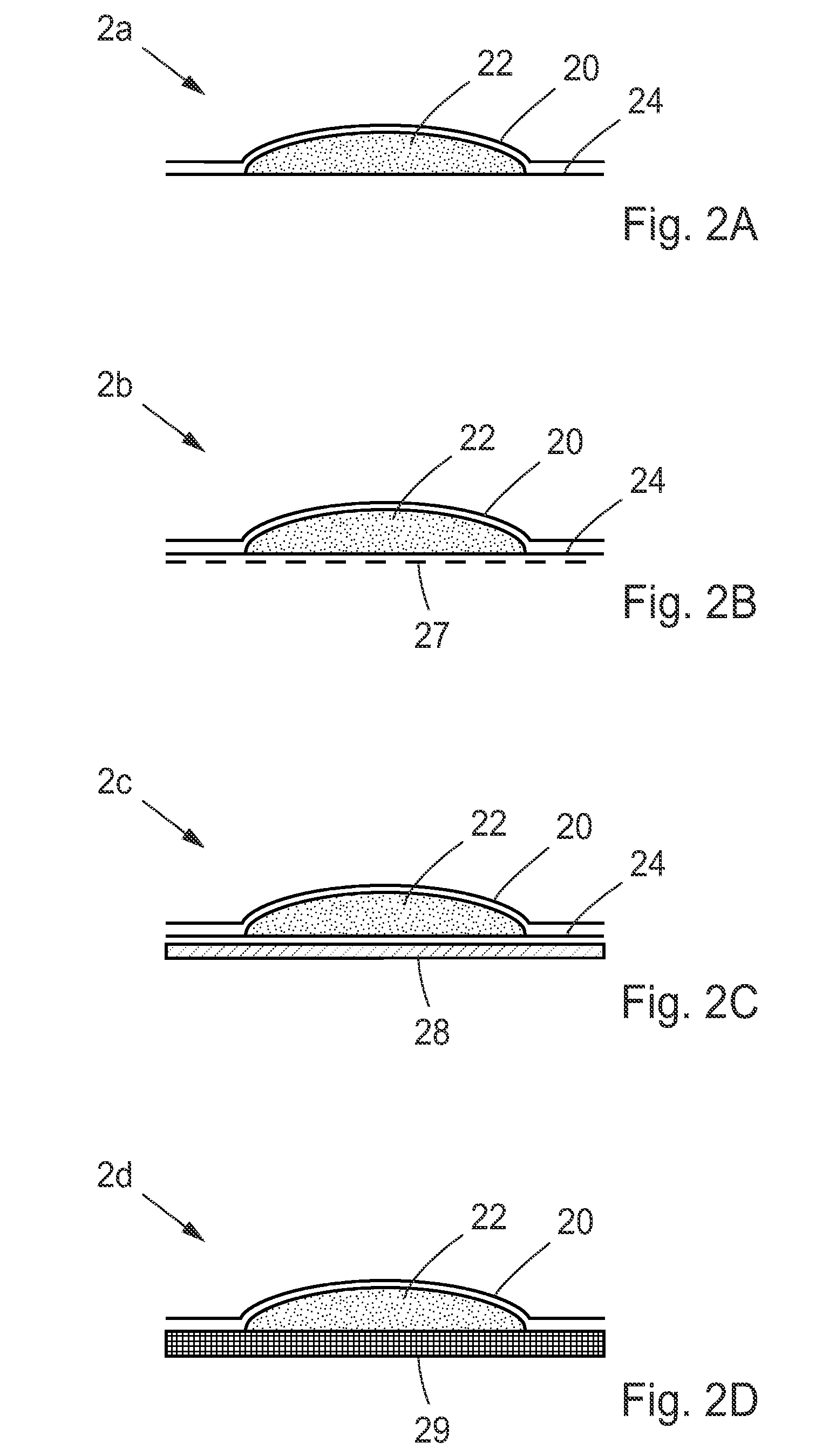Topical Dermal Delivery Device For Nitric Oxide Delivery
a delivery device and dermal technology, applied in the direction of biocide, antibacterial agents, drug compositions, etc., can solve the problems of inability to selectively penetrate specific components, undesired side effects on the user side, and limited shelf life of such patches, so as to facilitate the delivery of nitric oxide to the skin area and be patient-friendly
- Summary
- Abstract
- Description
- Claims
- Application Information
AI Technical Summary
Benefits of technology
Problems solved by technology
Method used
Image
Examples
example 1
Intense Dose Patch
[0131]The patch has a high NO dose level such as between 0.01-100 μmol / (cm2*min), such as 0.1 μmol / (cm2*min). It has a short duration of use, approximately ten minutes up to two hours, such as 1 hour use. To accomplish this intensity and lengths in dose curve a sufficient amount of NO donor has to be used such as 0.01-10 mg / cm2, such as 0.1 mg / cm2. Also a low pH in the activation fluid is needed, less than pH 6, such as pH 5. The volume of buffer needed is dependant of the NO donor amount used. For a 0.1 mg NO donor / cm2 patch, it is necessary to have 0.1-0.4 mL / cm2 depending on buffer strength. To ensure sufficient contact with skin a contact enhancement layer is used.
example 2
Extended Dose Patch
[0132]The patch have a medium NO dose level such as between 0.001-10 μmol / (cm2*min), such as 0.05 μmol / (cm2*min). It has an extended duration of use of six to twelve hours, such as eight hour use. To accomplish this intensity and length in dose curve, a sufficient amount of NO donor has to be used, such as 0.01-10 mg / cm2, such as 0.2 mg / cm2. In addition, a neutral to slightly acidic pH in the activation fluid is needed, such as pH 7. The volume of buffer needed is dependant of the NO donor amount used. For a 0.2 mg NO donor / cm2 patch it is necessary to have 0.2-0.8 mL / cm2, depending on buffer strength. To ensure sufficient contact with skin a contact enhancement layer is used.
[0133]Treatments and therapies that the patch is advantageous for are for instance:[0134]treatment of peripheral neuropathy;[0135]treatment of diabetic ulcers;[0136]wound care, such as post operative healing support;[0137]infection prevention and treatment;[0138]cosmetic use, including scar r...
PUM
| Property | Measurement | Unit |
|---|---|---|
| pH | aaaaa | aaaaa |
| pH | aaaaa | aaaaa |
| pH | aaaaa | aaaaa |
Abstract
Description
Claims
Application Information
 Login to View More
Login to View More - R&D
- Intellectual Property
- Life Sciences
- Materials
- Tech Scout
- Unparalleled Data Quality
- Higher Quality Content
- 60% Fewer Hallucinations
Browse by: Latest US Patents, China's latest patents, Technical Efficacy Thesaurus, Application Domain, Technology Topic, Popular Technical Reports.
© 2025 PatSnap. All rights reserved.Legal|Privacy policy|Modern Slavery Act Transparency Statement|Sitemap|About US| Contact US: help@patsnap.com



